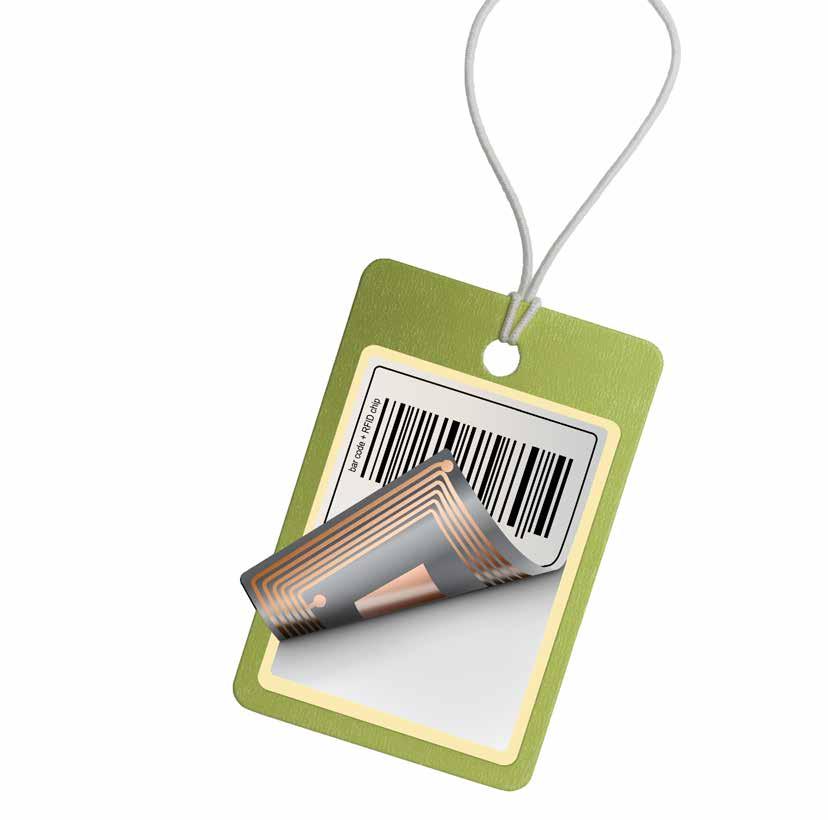
22 minute read
INTERVIEWING
To Record or Not Record
by David E. Zulawski, CFI, CFE and Shane G. Sturman, CFI, CPP
Zulawski and Sturman are executives in the investigative and training firm of Wicklander-Zulawski & Associates (w-z.com). Zulawski is a senior partner, and Sturman is president. Sturman is also a member of ASIS International’s Retail Loss Prevention Council. They can be reached at 800-222-7789 or via email at dzulawski@w-z.com and ssturman@w-z.com.
© 2016 Wicklander-Zulawski & Associates, Inc.
We just returned from the International Association of Interviewers’ Elite Training Days in Minnesota at the Best Buy corporate headquarters. We had a number of wonderful speakers covering topics ranging from false confessions, the PEACE interviewing model, and Making a Murderer confession tapes evaluations, plus some tips on leadership. All in all it was an interesting and thought-provoking two days of instruction.
One topic that seemed to form a connecting thread through many of the topics was a discussion of confessions,
contaminated statements, or improper tactics used by interviewers. The program started off with Steven Z. Kaplan, a litigator with the Fredrikson & Byron law firm discussing a case he worked on that was a miscarriage of justice. He along with other lawyers helped establish the individual’s innocence in a rape-homicide. He went on to discuss some of the causes of false confessions, including presentation of false evidence, age and mental capacity of the suspect, and length of the conversation, to name but a few.
Contaminated Confessions
One of the fundamental issues being addressed by legislatures across the country is the failure of police to record the interview and interrogation of suspects. A number of states have mandated the audio-video recording of police interrogations of suspects. The law firm Jenner & Block has an ongoing research project run by a senior partner to catalog states and cities that mandate recording of interviews and interrogations and the police response to having to record these conversations. This study is available on their website at jenner.com.
Kaplan suggested the introduction of evidence by the police could contaminate the conversation and provide the suspect with information to make his confession seem credible when compared against the investigative findings. He went on to say that the use of false evidence and the extended length of interrogations can increase the possibility of a false confession occurring. Having a recording of the interview and interrogation can identify if the investigators fed the suspect investigative findings that were later used to corroborate the confession. Unfortunately, simply identifying points in the conversation where information was leaked to the suspect does not clearly identify the suspect’s statement as a false confession. It simply suggests that if the suspect was innocent, the crime scene information could have been introduced by the police. However, if the suspect was guilty, he would’ve already known that information regardless of whether it was leaked by the police or not. Simply stated, the discussion of evidence should be limited during the interview and interrogation so that contamination does not occur.
Michael Yoder, supervisory special agent with the FBI’s Behavioral Analysis Unit, discussed personality types that fit along with the discussion of false confession, which as we mentioned threaded through most of the presentations. Pulling the two previous discussions together, David Thompson, CFI, discussed the implications of these two presentations while discussing and evaluating the documentary Making a Murderer. Evaluating the recorded conversations in the Dassey interrogation, the group was able to critique the conversation and potential missteps that may have affected the suspect’s decision to confess. It was this session that brought up a significant conversation about organizations currently using recordings in their dishonest employee interviews. It is this topic we want to focus the remainder of this and our next column on.
continued from page 12
Training and Accountability
As most of you know, we have been actively recording our interviews since we opened our doors as Wicklander-Zulawski in 1982. While we use the recorded interviews to illustrate the techniques and strategies in our training sessions, we also use them as a means to monitor and measure our investigators. If a supervisor is simply evaluating the effectiveness of the interviewer based on the subject’s written statement and whether or not the case was successfully closed with an admission and written statement, she may be missing crucial information on the process.
The recording provides outstanding feedback to the interviewer that can’t be replicated by simply sitting in and observing the conversation. Undoubtedly, the supervisor will miss any number of potential critiques because he is listening in real time. The other problem with this mentoring and evaluation strategy is it requires the evaluator to be present at the time of the interview. Being present may be cost prohibitive or time sensitive because of other commitments.
The recording provides an accurate reflection of what happened, when it happened, and how things were said that could never be replicated by an in-person evaluator. Review of the recording can provide significantly more relevant critiques to the new interviewer since he can actually see his behavior and hear his own words and the effect that they are having on the subject. There’s also an opportunity to evaluate behavioral clues that may have been present or verbal statements that could have led the interview in an entirely different direction. We find in our after-action evaluations of WZ interviewers that we can be particularly successful in identifying difficulties or strengths in the conversation.
Many of the participants in the Elite Training Days agreed that their organizations’ legal teams are reluctant to utilize recordings feeling that an investigator’s testimony is sufficient to defend the company against litigation. It is our feeling that times are changing, and there will be an expectation of a recording that will satisfy what actually occurred during the conversation between the investigator and subject. We are currently seeing a significant change in policing across the country first with the advent of dash cams in squad cars and more recently with body cams worn by officers. The quality of these videos and perspective is often limited leaving open to interpretation what was actually happening at the time of the incident. But without question, the preliminary response from police departments using cameras has been a significant reduction in citizen complaints.
One of the most widely reported studies of the use of body cams was conducted by the City of Rialto, California, which reported use-of-force incidents reduced by 59 percent and citizen complaints by 87.5 percent. Other departments have seen similar reductions in use-of-force and citizen complaints since the use of body cams was instituted. It is likely that the body cams significantly alter the police-public encounters since both are consciously aware the conversation is being recorded. This should translate into a significant savings on litigation costs and expenses associated with these types of use-of-force or complaint incidents.
Clearly, the officers are aware they are being closely monitored and are thus focused on adhering to their training in handling field incidents. Recording in an interview also seems to encourage interviewers to stick closely to the training model chosen for their conversation in a more formal interview setting in the station. The use of the recordings holds the officers accountable to the community in both the formal interview setting at the station and infield encounters.
In our last expert-witness engagement, the plaintiff’s attorney broached the question of recording the interview. During our testimony relating to recordings, we focused on the differences between an established interviewing room in a law enforcement facility and those who would have to record in a remote location or store facility that was not set up for recordings. In response to these questions, we noted that there were cost considerations a company must consider in providing its investigators with recording equipment, as well as maintaining and storing it, preserving the recordings, and reviewing the recordings, to name but a few. In the business world, there is going to be a close examination of the return on investment before any capital expenditures are made. Because of the random nature of recording in the field, there would also be issues relating to recordings that were incomplete because of equipment problems, audio that was garbled due to microphone malfunctions or background noise, and potentially the space available to remotely store the recording. This does not even mention the possibility of human error compromising the operation of the equipment, which may come into play.
In our next column, we will continue with the discussion of recording or not recording interviews. We will focus on some aspects of selling recording interviews to the organization and overcoming objections to its use. We will also discuss some of the practical aspects relating to legal issues of recording conversations in the workplace. Finally, we will focus on the benefits of monitoring and measuring interviewers using field interviews as the basis for self-improvement. In the meantime, if you have been successful implementing recording of interviews within your organization and would like to share how you were able to sell the concept or if you have not been successful and would like to share the obstacles you are facing, we will share those thoughts and some recommendations in the next column. Please forward to DZulawski@W-Z.com.
RFID IN RETAIL
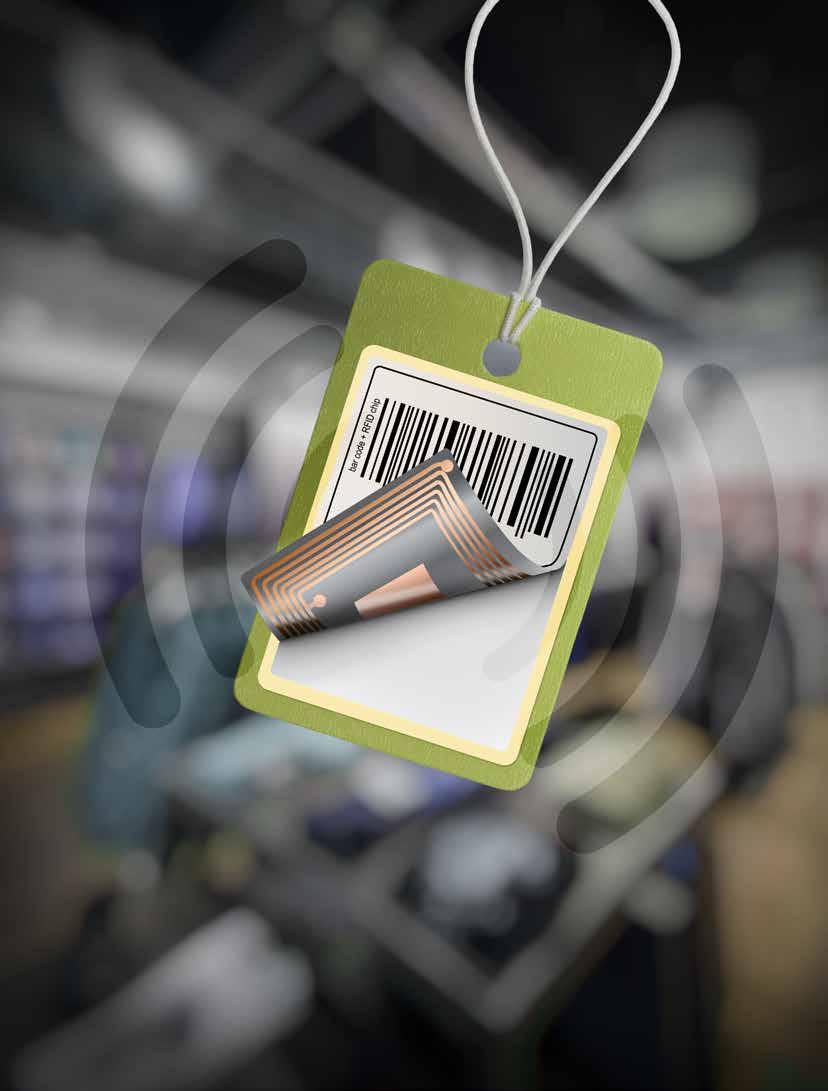
the journey to adoption
By Lee Pernice, LPC, Contributing Writer
Radio frequency identification, or RFID, has been touted as a magic elixir for retail for more than twenty years. Sometimes referred to as an intelligent alternative to standard electronic article surveillance (EAS) systems, a path to better inventory tracking, and a supply chain replenishment tool, the technology at times struggled to find a use case that would make a real impact on retail operations. This article will take a look back at where it all started to where we are today, attempting to capture the milestones, obstacles, and triumphs along the way. So let the journey begin.
A Little History
The technology is widely believed to have been invented in 1945 as an espionage tool for the Soviet Union and used during World War II by allies and Germany alike to identify aircraft as either friend or foe. Over the years it has been used to track everything from automobile parts during the assembly process to pharmaceuticals in warehouses and livestock on farms.
RFID started to gain attention, both good and bad, in the retail world in the mid-to-late 1990s. The formation of the Massachusetts Institute of Technology Auto-ID Center in 1999 by Sanjay Sarma, PhD—who also co-founded the RFID software firm OATSystems (acquired by Checkpoint Systems in 2008)—helped legitimize the process of applying the technology to meet retail needs. Before the formation of the center, there were no standards for the technology with a wide array of frequencies in use by a number of different companies and in different parts of the world.
Originally funded by Proctor & Gamble, Gillette, and the Uniform Code Council, the center was formed to develop an electronic product code (EPC), a global RFID-based item identification system to ultimately replace the Universal Product Code (UPC). While the EPC is more prevalent today with billions of items now tagged each year, the goal of phasing out the UPC was never realized for a number of reasons, foremost being cost, volume, and the need for a human-readable format.
As a early member of the center, Kevin Lynch, LPC, Tyco’s executive
director of business development, reflected back on the early days at the center and said, “It was always my belief that my personal time and the company’s (at the time Sensormatic Electronics Corp.) financial investment in the MIT Auto-ID Center was well worth it. Proctor & Gamble was a forward-thinking company. It spent considerable dollars in helping create the RFID standard that is now EPCglobal®. Once the retailers that were escorted through the lab realized that ultimately RFID would help to provide increased throughput at their front end and provide greater inventory accuracy, they started to help fund the effort as well.”
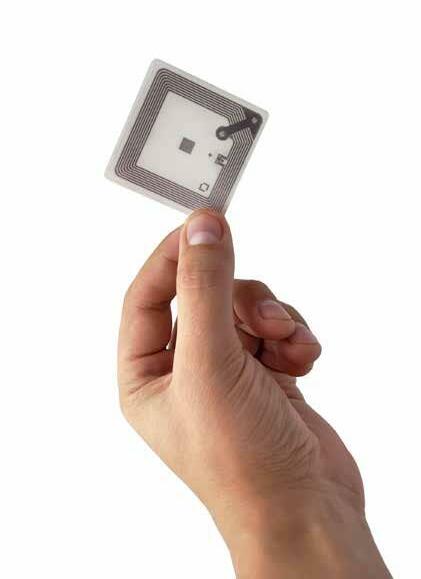
In 2005, the RFID Research Center opened at the University of Arkansas as part of the Sam M. Walton College of Business under the direction of Bill Hardgrave, PhD. Initially funded by companies such as ACNielsen, Deloitte, Gallo Winery, Tyson Foods, and Walmart, it focused its work on technology deployment, data analytics, and business cases for deploying RFID primarily for retail and the retail supply chain.
It was there that Claude Verville, LPC, the former vice president of loss prevention, safety, and hazmat for Lowe’s and now the president of Shrink & Safety Solutions, and his executive team got one of their early demos of a proposed RFID application for retail. The demo consisted of a shelf-sweeping incident where the

Claude Verville RFID technology detected an anomaly tied to the number of razor blades removed from the shelf as it related to what would be considered average product removal. The event triggered a camera to capture an image and send an alert to a store manager.
“I felt the concept was good in theory, but at that time, there was no tie-in to the exit. Getting a notification and an image of the theft after the fact had value, but I felt it fell more into the loss reaction category than the loss prevention category. I still feel today that while knowing what is being stolen is important, preventing the theft needs to be a priority,” commented Verville.
Through most of the 2000s, RFID in retail development concentrated heavily on case and pallet tagging in a warehouse environment and throughout the supply chain. Leading this charge was Walmart, which implemented a project across a number of its warehouses and distribution centers and asked key suppliers to participate by tagging their pallets and cases with RFID sensors.
Limitations to the technology’s ability to read the tags in a somewhat harsh warehouse environment with tall ceilings and metal racking along with the high costs of readers and tags caused the programs and widespread adoption to languish through the balance of the decade. But perhaps the biggest drawback the technology faced was the lack of a clearly defined use case or cases that could deliver a proven return on investment.
“I think the industry was slow to use based on cost to implement and trying to determine ROI,” stated Stan Welch, vice president of business development for the Zellman Group, senior account executive for Agilence, and a former loss prevention executive for several major retail chains.
Case and pallet tagging was not delivering the desired results, and privacy issues relating to item-level tagging at the time made many
WE’VE GOT YOU PEGGED!
SHAVE YOUR LOSSES WITH THE AUTOPEG TAG
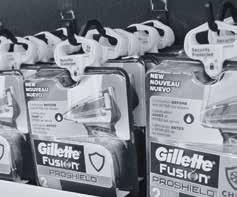
AutoPeg Tags™ are a natural fit for high-theft items displayed on peg hooks, providing security with a one-step, pinless design. They are rugged, reusable and RFID-upgradable.

retailers leery of going down that path. Those privacy issues were later proven to be unfounded, but the attention that certain privacy groups received had an early impact.
“For many years, RFID was considered a promising option for retail applications. The industry just hadn’t found the right fit to take advantage of its capabilities,” stated Kim Melvin, director of global solutions and product marketing for Tyco. “Tracking inventory through a warehouse with traditional barcodes was fairly efficient. It was once that inventory made it to the store that the real problems starting to emerge, and a viable use case began to take shape.”
The Era of Dot.Com and the Dawn of Omni-channel Retailing
The art and science of retailing is an ever-changing dynamic. What worked five or ten years ago is probably no longer relevant in today’s
retail world. Growth from building new stores or entering new markets no longer delivers the results an organization needs to be successful. Without a doubt, one of the biggest factors affecting retail as we know it today is the impact the Internet has on the way consumers shop. Sometimes coined “the connected consumer,” this new breed of shoppers is more educated on the products they seek to buy through the use of the Internet, smart phones, tablets, and social media.
Consumer expectations are at an all-time high, putting unprecedented demands on retailers across all channels. And while customer service has always been a determining factor in the success or failure of a retail brand, never has it been more important or more challenging to deliver thanks to this thing called omni-channel retailing. At its core, omni-channel is defined as a multichannel sales approach that provides the customer with an integrated shopping experience. The customer can be shopping online from a desktop
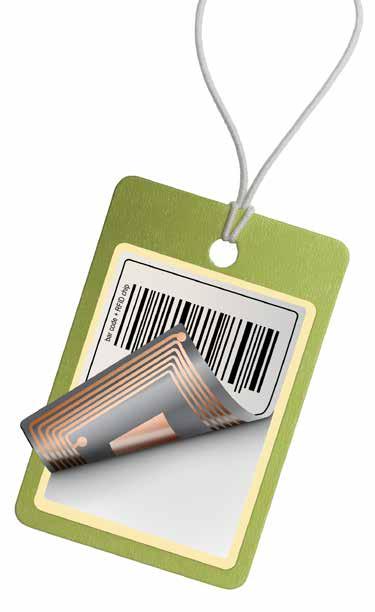
or mobile device, by telephone, or in a bricks-and-mortar store, and the experience would be seamless.
According to the Home Depot’s 2015 fourth quarter investor call, the company saw its online business grow
Perhaps one of the biggest understandings to come out of the deployments so far is that RFID is not a one-trick pony. The benefits the technology delivers are cross-functional and cross disciplines and departments. It has the ability to fundamentally change the way retailers operate their businesses.
25 percent year-over-year contributing more than $4.5 billion in revenue. And of that number, more than 40 percent of those customers chose to pick up the merchandise in store, a form of omni-channel fulfillment.
“Inventory accuracy has never been more important than in today’s omni-channel world,” stated Su Doyle, director of RFID applications for Checkpoint Systems. “When a customer orders something online for store pick-up
and the products is not available, it creates a recipe for disaster. That customer doesn’t care if the product is missing due to theft, paperwork error, or an unforeseen out-of-stock. The end Su Doyle result is the same.” Even before omni-channel retailing came into prominence, retailers realize the importance of inventory counts. For most retailers, a reserve was taken at the end of the year to account for deviations between book and physical inventory. While painful enough to the company’s bottom line, the toll that missing inventory was taking on customer satisfaction levels was not as obvious.
use Cases for RFID In Retail—Finding The ROI
A 2014 survey of 120 major retailers polled by Chain Link Research found improved inventory accuracy, which translated into reduced out-of-stock and better on-floor availability of merchandise, was the number one reason for implementing an RFID program.
According to Checkpoint’s Doyle, several of the company’s apparel retail and department store customers have increased on-shelf availability by 20 percent with RFID and experienced a 10 to 15 percent sales uplift for RFID-tagged merchandise. As it relates to omni-channel fulfillment, its customers have reportedly been able to double the fulfillment speed with near-perfect order accuracy when using RFID-enabled process automation.
An early proponent of the technology, Bloomingdale’s Vice President of Shortage Control Roger Blazek found the accuracy that RFID delivers to item-level inventory was one of the main driving forces for adoption.
“Using RFID to course-correct inventory throughout the year instead of waiting for the annual inventory processes helps retailers make better business decision. The accuracy of the technology also contributes to confidence in the data, which can take a lot of the guesswork out of the equation when planning the next strategic direction,” stated Blazek.
Other prominent use cases for the technology include product location and loss reduction. An emerging business case revolves around lowering on-hand inventory levels while not impacting customer service levels, although this application is in the early stages of adoption.
Many times retailers actually have the inventory on-hand, but it is stuck in a backroom, noted Melvin. RFID can streamline locating missing inventory through the use of mobile handheld readers significantly saving both time and money and a potential lost sale. This is particularly important in complex merchandise categories where color
Fight it with the C.A.P. Program!






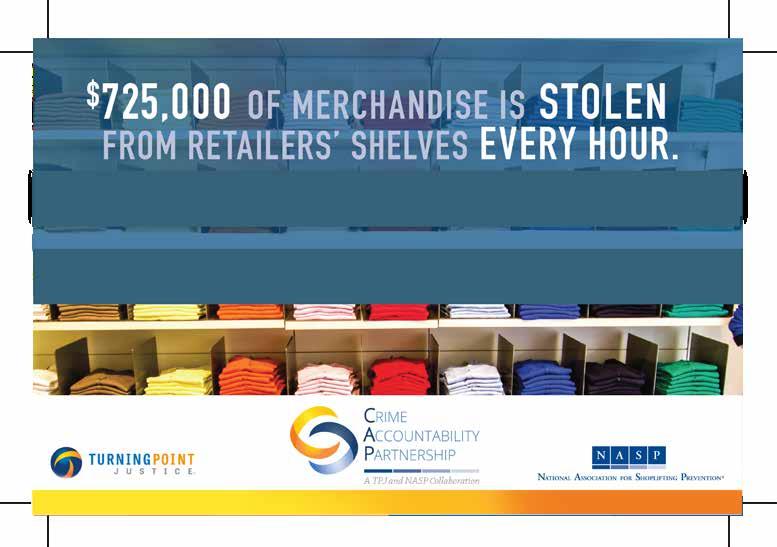
Improved Restitution Increased Productivity Decreased Liabililty Offender Accountability
TurningPointJustice.com ShopliftingPrevention.org
and size variations matter most, such as fashion and footwear.
“RFID helps us better manage replenishment items and leverage our owned inventory by ensuring that merchandise that is already in our stores is ready and available for purchase, not sitting in a stockroom. Customers expect to find what they are looking for immediately, not wait for an associate to search through back stock to find it,” said Blazek.
As it relates to loss reduction, Verville believes that RFID is an essential tool for LP teams as well. In many companies, it is the LP team that performs daily, weekly, or monthly cycle counts of high-cost, high-margin, or high-risk merchandise to identify shrink trends and proactively analyze why, what, when,
and where the losses are coming from in order to adjust LP, operations, and merchandising strategies.
“RFID can help to greatly accelerate the cycle counting process, saving both time and payroll dollars,” stated Verville. “By the very nature of what we do in loss prevention, asset protection, and risk management, accuracy of information is the foundation of the programs we create and execute to improve overall business results across departments and the company.”
Chad McIntosh, vice president of loss prevention and risk management for Bloomingdale’s, agreed with Verville and added, “Having the visibility to more frequent and accurate inventory counts helps us better analyze the discrepancies between book and physical inventory, identify potential areas of vulnerabilities, and quickly re-tool our loss prevention programs, particularly during high-peak times.”

Chad McIntosh
– Roger Blazek, Vice President of Shortage Control, Bloomingdale’s
Lessons Learned So Far
Perhaps one of the biggest understandings to come out of the deployments so far is that RFID is not a one-trick pony. The benefits the technology delivers are cross-functional and cross disciplines and departments. It has the ability to fundamentally change the way retailers operate their businesses. To be effective and successful, RFID programs and their sponsors need executive level buy-in at the highest level and a commitment from all areas of the company.
“Perhaps more than any other technology introduced into retail since the barcode, RFID has the ability to shape and improve the way retailers operate,” said Brian Boyle, RFID
LISTEN. SOLVE. DELIVER.

continued from page 22 business development for Tyco. “From merchandising, store operations, loss prevention, and supply chain to the executive offices, the technology can have a profound impact on the operations given the right level of support from all parties involved.”
Boyle went on to emphasize the importance of beginning any RFID program with a pilot. It is here that the use case or business case is built out and where expected results can be clearly defined.
“We started our RFID journey with a small pilot in a single department in one of our locations

to prove out the concept and develop the business case,” stated Blazek. “Today, all of our locations are RFID compatible and capable of accepting RFID-tagged merchandise.”
Another key element to implementing a successful program involves managing the volume of data that RFID produces. Doyle stated that her company works closely with its customers to understand the value the data brings and how to incorporate RFID benefits into daily operations using task management.
“Showing the store-level employee how their work impacts and benefits the organization—so they don’t feel like it is just another task or step they are required to do—is important to consistent adoption of any RFID program across a large retail chain. Decentralized operations require consistent processes and compliance to ensure data quality and ROI,” she explained.
Parting Advice
No program can be successful without a plan whether tactical or strategic, and RFID programs are no different.
“Every aspect of your business needs to be analyzed to see how this technology application can be effective. From inventory accuracy to order online for in-store pickup to warehouse fulfillment operations, the right, well thought-out program can deliver benefits not previously seen. Every year, I put together my strategic business plan that covered the next three to five years, and every year RFID and big data was part of that plan,” concluded Verville.
Whether you are just starting your journey or are continuing down the path, may you find increased sales, profits, and customer satisfaction along the way. Bon Voyage.
– Claude Verville, LPC, President, Shrink & Safety Solutions
LEE A. PERNICE, LPC, is a freelance writer with more than twenty years’ experience in the retail loss prevention industry. She has held director-level positions with leading high-tech and security solutions providers specializing in the areas of communications and marketing. Pernice is LPC certified and has a thorough understanding of the technologies used to reduce shrink and improve profits for retailers. She can be reached by email at leepernice@gmail.com or 954-682-8551.







